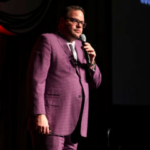Programmed presentations in show-floor theaters is nothing new, but in the past, it was pay to play — exhibitors presented only if they paid for the opportunity That made education on the show floor something of a rarity, rather than a regular offering. The more valuable experience for attendees takes a page from PCMA’s annual meeting, Convening Leaders, which doesn’t have a trade-show component but a Learning Lounge, offering TED-type talk programs and hands-on technology education, in cool theaters. Not every recent attempt at this has been successful. Here are a few lessons learned that may help increase your chances of successfully offering education on the show floor.
1. Location Some organizations have added this concept late in the game and placed the theaters on the perimeter or in the back of the expo hall. When located in a more central location of the show floor, not only does attendee participation increase, exhibitors compete to have their booth located near these theaters at next year’s event.
2. Design/setup Theaters should be kept intimate with a capacity of 30 to 50 people, max. Seating should be informal — couches, benches, or curved theater seating – with room for observers to stand in the rear. Don’t use classroom or roundtable seating. Large plasma screens work well for visuals. A portable sound system is recommended. Where possible, co-locate two to three theaters in a single area. Use plexiglass to separate theaters from the rest of the show floor, so passersby can see into the experience.
3. Session length Content must be delivered in bite-sized chunks. Fifteen-minute TED-type talks work best. Allow five minutes between presentations for attendees to move in and out. Organizers that have programmed longer experiences have not seen the buzz or positive results. You want attendees to jump into the education experience and then get back to booth visits.
4. Threading Each theater should have a theme for the entire show or the timeframe programmed. Each presentation should map to that theme. Technology, new innovative solutions, or content that addresses attendees’ biggest challenges tend to hit the mark best. Replaying presentations on different days and times gives attendees the opportunity to fit sessions of interest in their schedule.
5. Monetization Some organizers offset the costs by seeking theater sponsors that are interested in being viewed as thought leaders or investors in the attendee experience. Sponsors are more likely to jump in the second year around, when they see the buzz it generated.



